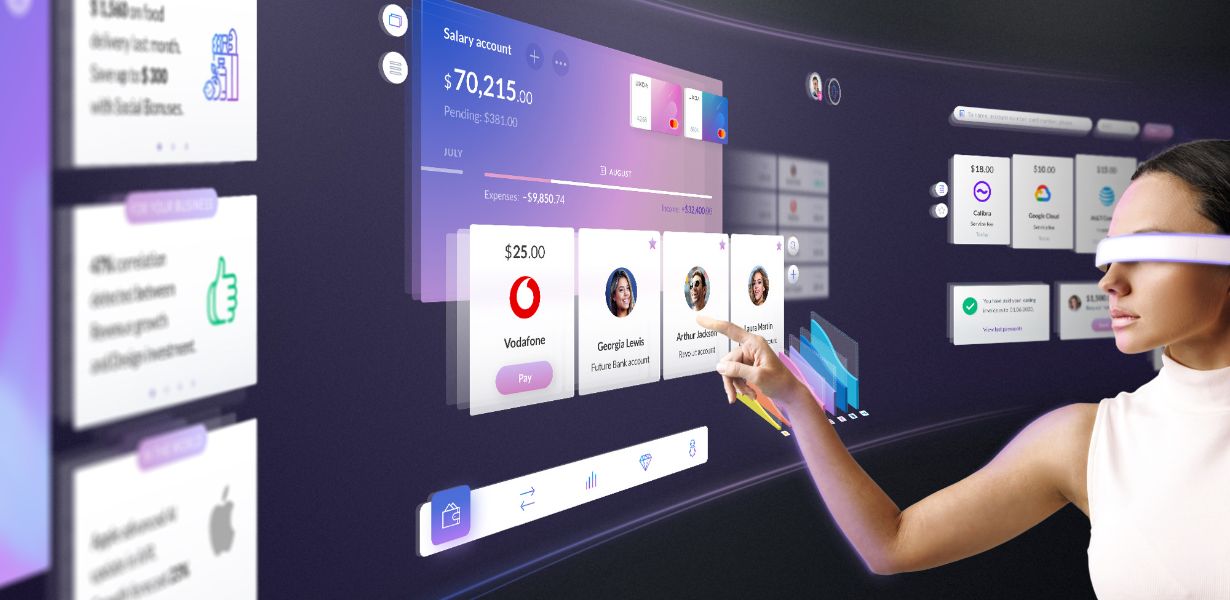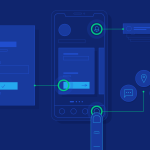
Augmented Reality’s Influence on UI Design: A Paradigm Shift
- Post
- August 7, 2023
- Front-End Frameworks, UI/UX Design, Web Development
- 0 Comments
In the fast-evolving landscape of user interface (UI) design, a dynamic force has emerged, poised to revolutionize the way users interact with digital environments: Augmented Reality (AR). This technology, once confined to science fiction, is now a tangible reality, profoundly impacting UI design principles and practices. As we navigate this cutting-edge territory, we explore how AR is reshaping user experiences, unearthing a trove of opportunities for designers to create immersive, intuitive, and captivating interfaces.
The AR Renaissance in UI Design
Augmented Reality, a fusion of the virtual and physical worlds, has ushered in a renaissance in UI design. Through the lens of AR, designers can superimpose digital elements onto the real world, amplifying user engagement and transcending conventional boundaries. This innovative approach cultivates a sense of wonder and empowerment, enabling users to interact with content in unprecedented ways.
Key Point:
AR empowers designers to overlay digital components seamlessly onto the physical world, transcending traditional design constraints.
Elevating User Engagement through Immersion
At the heart of AR’s impact lies its ability to immerse users in rich, multisensory experiences. By integrating contextual information directly into the user’s environment, AR cultivates a deep connection between the user and the interface. This heightened engagement not only enhances usability but also augments the emotional resonance of the interaction.
Key Point:
AR’s immersive nature enhances user engagement by integrating digital content seamlessly into the user’s real-world environment.
AR-Driven Personalization and Customization
AR-driven UI design extends a personalized touch to user experiences. Leveraging real-time data and user preferences, AR interfaces can adapt and customize content, tailoring it to the user’s context. This level of personalization fosters a stronger sense of connection, making interactions more meaningful and relevant.
Key Point:
AR enables dynamic personalization of content, creating a more tailored and meaningful experience for users.
Navigating the Challenges of AR Integration
While the promise of AR is alluring, its integration into UI design comes with challenges. Designers must navigate the technical complexities of AR hardware and software, ensuring seamless compatibility and optimal performance across various devices. Additionally, considerations for privacy and data security must remain paramount as AR collects and processes real-world information.
Key Point:
AR integration requires careful attention to technical compatibility, performance optimization, and data privacy.
Redefining E-Commerce with AR
E-commerce stands poised for a transformational shift through AR integration. Virtual try-ons, where users visualize products in real-world settings, bridge the gap between online shopping and in-person experiences. This not only empowers users to make informed decisions but also reduces the uncertainty associated with online purchases.
Key Point:
AR-powered virtual try-ons revolutionize the e-commerce experience by allowing users to visualize products in real-world contexts.
AR’s Impact on Educational Interfaces
In the realm of education, AR presents a transformative opportunity. Complex concepts can be elucidated through interactive 3D models, creating immersive learning environments. AR-driven educational interfaces spark curiosity, enhance understanding, and make learning an engaging adventure.
Key Point:
AR-driven educational interfaces enhance learning by offering interactive 3D models that make complex concepts tangible and engaging.
Designing for Spatial Awareness
AR’s success hinges on the meticulous design of spatial interfaces. Designers must consider the user’s physical surroundings, optimizing the placement and behavior of AR elements. This approach demands a shift from 2D-centric design thinking to a more holistic consideration of spatial relationships.
Key Point:
AR design requires a shift from 2D design principles to spatial awareness, ensuring harmonious integration with the user’s physical environment.
Bridging the Physical-Digital Divide
AR serves as a bridge between the physical and digital realms, offering a novel opportunity to bridge spatial and cognitive gaps. Through AR interfaces, users can seamlessly transition between the real world and digital content, fostering a cohesive and intuitive user experience.
Key Point:
AR acts as a bridge, facilitating seamless transitions between physical and digital environments, enhancing user experiences.
The Future of UI/UX Frameworks
The advent of AR introduces a paradigm shift that will inevitably influence UI/UX frameworks. Designers and developers must adapt to this evolving landscape, embracing AR as an integral component of their toolkit. AR-enhanced frameworks will empower creators to craft interfaces that transcend traditional boundaries, pushing the boundaries of creativity and innovation.
Key Point:
AR’s emergence prompts the evolution of UI/UX frameworks, enabling designers to create interfaces that transcend conventional design constraints.
Final Words: AR’s Evolution in UI Design
In the ever-evolving tapestry of UI design, Augmented Reality emerges as a transformative force, reshaping user experiences and forging new avenues for creativity. Through AR’s seamless integration with the real world, designers can unlock unparalleled levels of engagement, immersion, and personalization. As we traverse this uncharted territory, the boundaries of UI design expand, driven by the boundless potential of Augmented Reality.
Commonly Asked Questions
Q1: How does Augmented Reality enhance user engagement?
Augmented Reality enhances user engagement by seamlessly integrating digital content into the user’s real-world environment, creating immersive and multisensory experiences.
Q2: Can AR be integrated into e-commerce platforms?
Absolutely. AR is revolutionizing e-commerce by enabling virtual try-ons, allowing users to visualize products in real-world settings before making a purchase.
Q3: What challenges do designers face when integrating AR into UI design?
Designers must navigate technical complexities, ensuring compatibility and optimal performance across devices, while also addressing privacy and data security concerns.
Q4: How does AR impact educational interfaces?
AR transforms education by providing interactive 3D models that make complex concepts tangible and engaging, sparking curiosity and enhancing learning.
Q5: How will AR shape the future of UI/UX frameworks?
AR’s emergence will influence the evolution of UI/UX frameworks, empowering designers to create interfaces that transcend traditional design constraints and embrace the possibilities of Augmented Reality.




